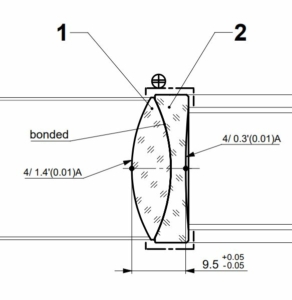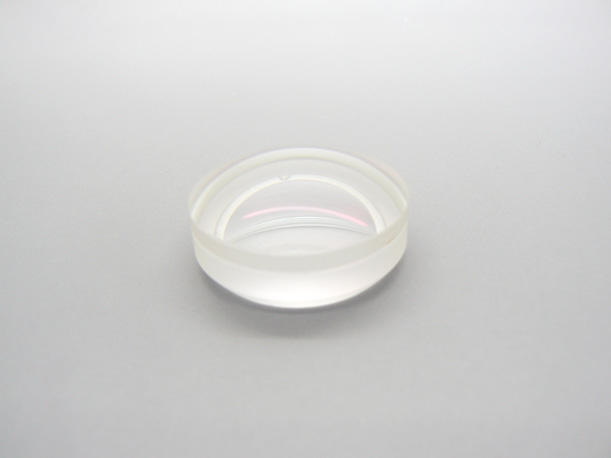Doublet lens: a complete guide
The complexity of optical elements comes from the difference between simplified elements used for simulation and real optical elements that comes with limitation and defaults. Doublets are a way to minimise some optical default in your optical system, lets learn more about them.
What is a doublet lens ?
A doublet lens is a assembly of two lenses of different material cemented together.
Every optical material is subject to chromatic dispersion, defined by their Vd value. This chromatic dispersion will cause scattering of a signal at different wavelengths.
The objective of manufacturing a doublet lens is two use to “complementary” dispersing material to compensate the chromatic dispersion and have a resulting doublet lens with identical focusing power on it’s whole wavelength range.
These lenses are also called : achromatic lens, meaning lens with no chromatic dispersion, achromatic doublet is also a common name.

Illustration : Doublet lens drawing
How to you make an achromatic doublet ?
Achromatic doublets are usually made out of two kinds of glass : Flint glass and Crown glass. A concave lens will be made usually in Flint glass and a convex lens in Crown glass with similar radius of curvature so they can easily be cemented together.
Flint glass are high refringent glass, meaning that they will cause a high scattering of light rays according to their wavelength. While Crown glass are low dispersion glass. It is easy to find is a glass is Flint or Crown as its name will include a “F” for Flint or a K for Crown (for example in the most common : N-BK7 ( Schott) or H-K9L (CDGM).
Cementing of the two lenses to form the doublet, is done with very thin, optically neutral glue material and hardened with UV light. Positioning of both lenses during the cementing and the hardening of the cementing medium is the key factor to the success of the manufacturing of the achromatic lens.
In order to increase optical transmission of the lens, it is not unusual to have a antireflect coating added on external surfaces after the cementing.

Picture of a objective doublet lens.
What is the purpose of achromatic doublet ?
Doublets improve the optical quality of a lens reducing both chromatic dispersion and spherical aberration. Their were first discovered in the XVIII century in England for telescopes applications.
Currently many imaging applications in the visible are using doublets :
- Astronomy
- Endoscopy
- Microscopy
- Photography
How to buy an doublet lens ?
Designing of a a doublet lens is not very difficult but need the experience of an optician to better understand the material possibilities and define the surface shapes of the two optics.
Design deliverable will be a separate drawing including optical glass selection for each component and eventually an assembly drawing of the doublet that will state the coating requirements and may also request blackening of the doublet edge.
Once the design completed, precision optics manufacturers with the experience and ability to assemble doublet lenses, will be able to quote for its manufacturing.







